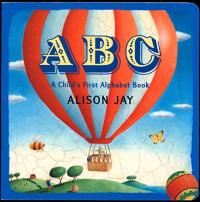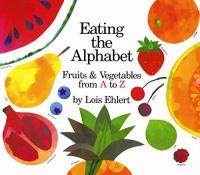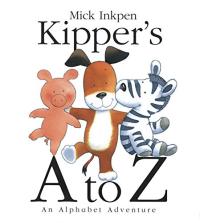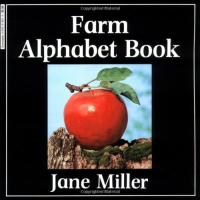Key Information
Focus
Appropriate Group Size
Why teach about the alphabet?
- Letter naming is a strong predictor of later reading success
- Learning letter names helps a child learn letter sounds
- It helps students develop their understanding of the alphabetic principle
Watch lesson: sound-letter dictation (whole class)
At Prather-Brown Center in Frederick, Oklahoma, teacher Monica Peevyhouse helps her students practice writing letters through sound-letter dictation. (Reading Universe)
Watch lesson: alphabet in my mouth (whole class)
Students practice each letter-name, sound, and corresponding action to help solidify letter-sound correspondences in an active and engaging way — with a song. (Balanced Literacy Diet: Putting Research into Practice in the Classroom)
Collect resources
Matching upper-case and lower-case
Teachers can use the following activity to ask students to help the “Mama animals” (uppercase letters) find their “babies” (lowercase letters). This game includes matching the uppercase mothers with their lowercase babies. See example ›
This link provides a template for a printable “Superhero” upper- and lowercase letter match game. See example ›
This file includes uppercase and lowercase letters in a matching game that parents can use with their child at home. See example ›
This link provides templates for printing cards to use for writing uppercase and lowercase letters. See example ›
Letter formation: using sand, play dough, or flour
This link provides teachers with downloadable mats with the alphabet letters for helping children use play dough for learning letter formation. See example ›
Letter bingo
Bingo is a simple game that children enjoy and can be used to help them learn about the upper- and lowercase letters. This link allows teachers to print the letters and board needed to play letter bingo. See example ›
Letter stamps
Stamps are an excellent “hands-on” activity for helping students learn about the alphabet. The activity described in the link below provides teachers with some creative ideas for making letter stamps out of sponges. Teachers can use sponges and paint in a variety of ways to help children understand the shape and function of upper- and lowercase letters. See example ›
Letter recognition fluency
This online document contains several activities that are helpful for building letter recognition fluency. Teachers can download materials needed and follow the instructions for each activity. There are also some ideas included for extending and adapting each activity to further enhance learning. Some examples are provided below. Download activities ›
Speedy Alphabet Arc: Teachers can download and print a copy of the alphabet “arc” and have students use letters to match the ones on the arc. Parents could use this idea at home with magnetic letters by placing the arc on the refrigerator and have the child match the letters. Using a timer and seeing how quickly the child can match the letters is optional.
Glow Go: This activity includes the use of glow in the dark chalk and black construction paper. Students can work together taking turns using a flashlight and naming the letters.
Hungry Letter Mouse: Teachers can utilize this activity for students to work on letter recognition in pairs using an eraser and dry erase marker. One student can use the eraser to be the mouse and the other student names the letter before the “mouse” eats it (i.e., erases it).
Letter books
Teachers can use the downloadable materials form this website to create letter books in which each page contains one letter. The kids draw or cut pictures from magazines that start with the particular letter and glue them into their “book.” See example ›
Downloadable letter and alphabet cards
Flash cards
The link listed below provides teachers with downloadable ESL flashcards. These are free and printable for use within the classroom. There are large sets for use with teaching letters and vocabulary, and smaller sets for language learning games. See example ›
This website provides printable color flashcards that are great for teaching upper- and lowercase letters. These cards are free and use the Zaner Bloser font which is very simplistic — ideal for teaching young children. See example ›
Alphabet cards
The downloadable alphabet cards available from this link have various fonts to choose from, color picture cards to accompany the letters, and creative ideas for activities. See example ›
Race track alphabet
The website below offers teachers the ability to download letters of the alphabet in race-track format. Children can use toy cars to trace around the letters to help learn the formation. See example ›
Differentiated instruction
For second language learners, students of varying reading skill, and younger learners
- Begin with a very simple, plain alphabet font like Zaner Bloser. As children become more familiar with letter shapes, progress to different fonts that may present letters slightly differently. For example, consider how the letters /a/, /g/, /t/ appear in different fonts.
- Decide how many letters a child or group should work with at one time. Very emergent learners should begin with fewer letters; other students can manage working with more letters at one time.
- Just for fun! Serve alphabet soup or use Alpha-bits cereal as an extra reinforcement of letters.
See the research that supports this strategy
Adams, M. (1990). Beginning to read: Thinking and learning about print. Cambridge, MA: MIT Press.
Snow, C., Burns, M., & Griffin, P. (Eds.). (1998). Preventing reading difficulties in young children. Washington, DC: National Academy Press.
Texas Education Agency. (2002). The Alphabetic Principle.
Children’s books to use with this strategy

ABC: A Child’s First Alphabet

Chicka Chicka Boom Boom

Eating the Alphabet

Kipper’s A to Z: An Alphabet Adventure

